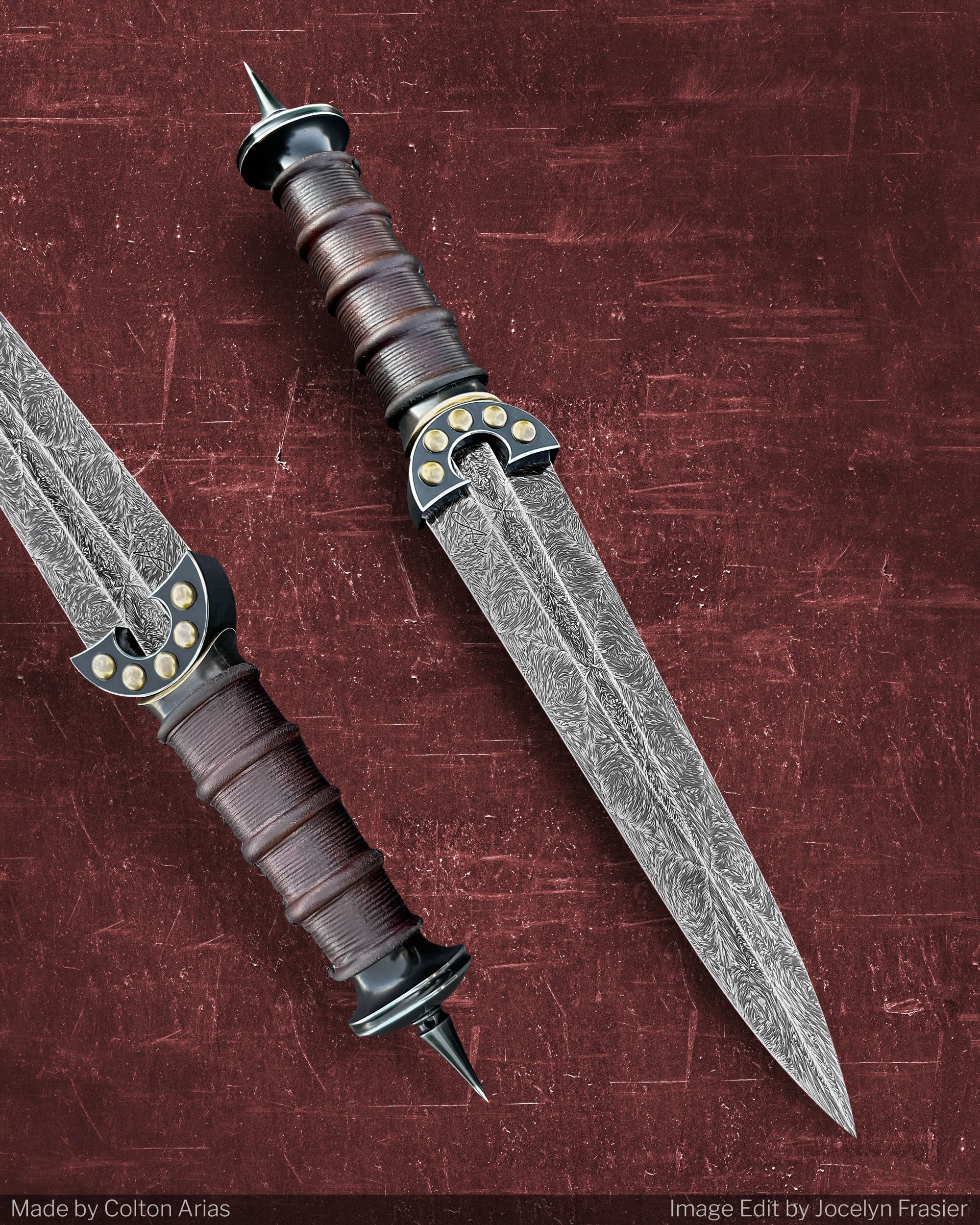 Image 1 of 14
Image 1 of 14

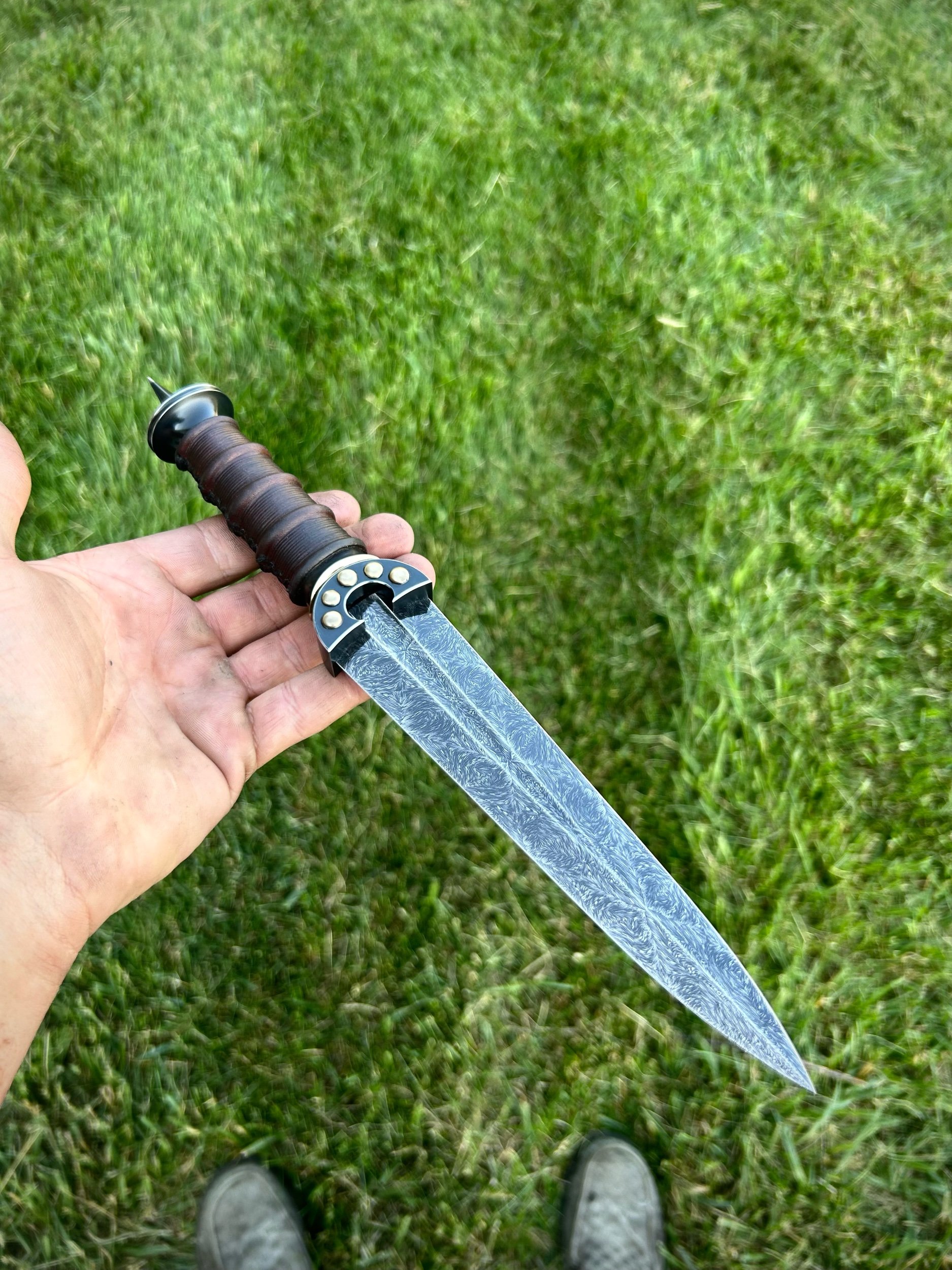 Image 2 of 14
Image 2 of 14

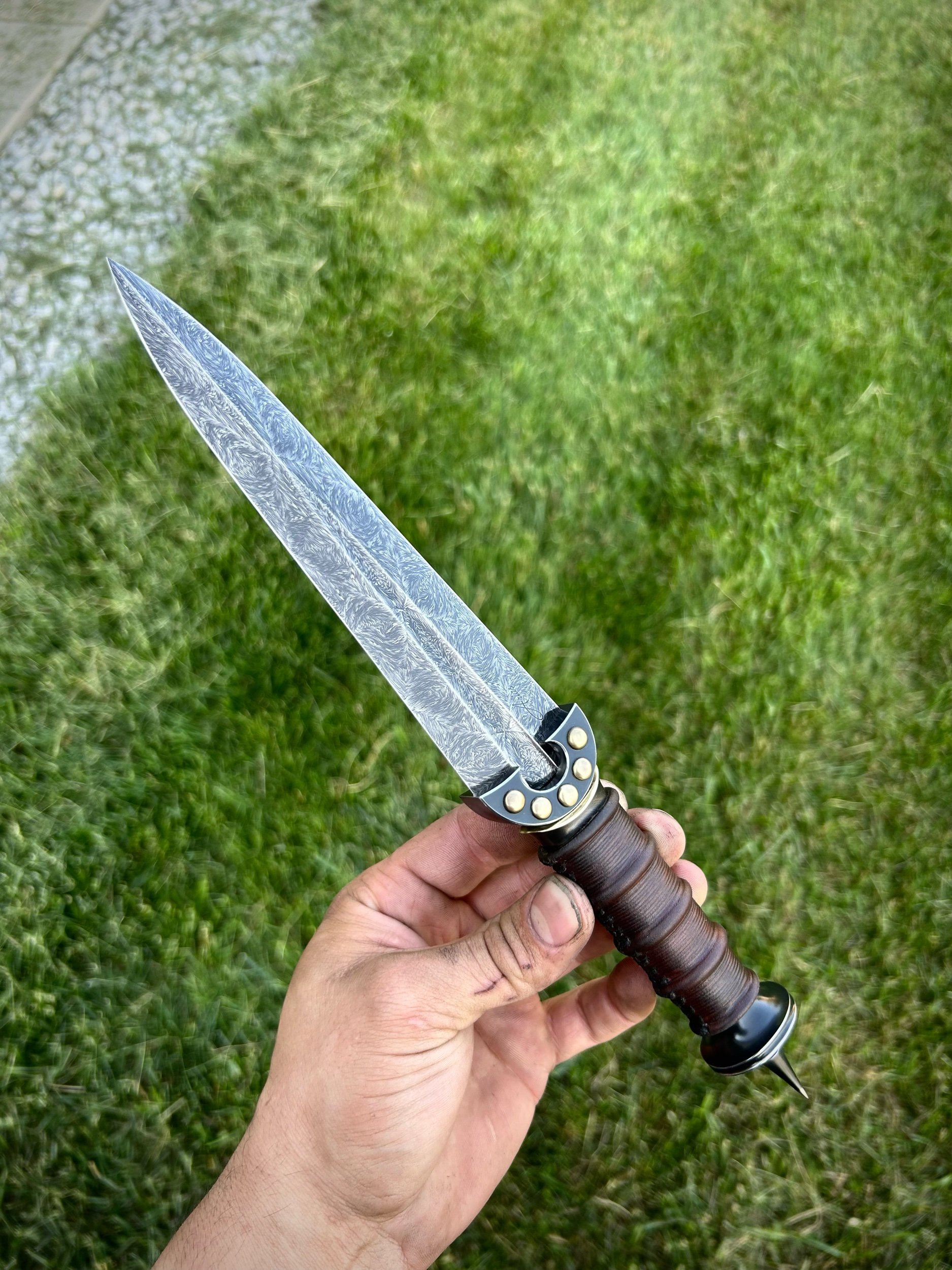 Image 3 of 14
Image 3 of 14

 Image 4 of 14
Image 4 of 14

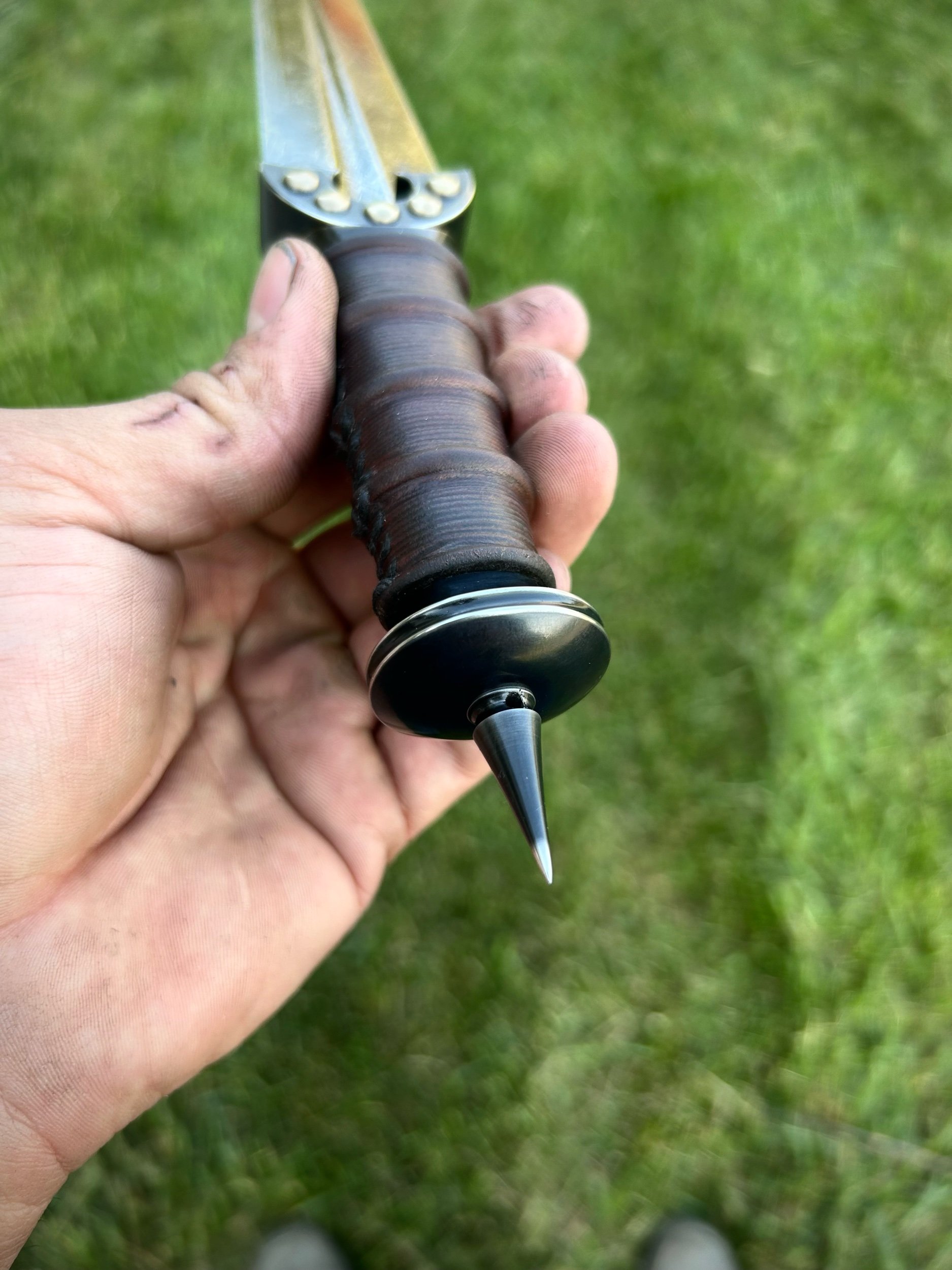 Image 5 of 14
Image 5 of 14

 Image 6 of 14
Image 6 of 14

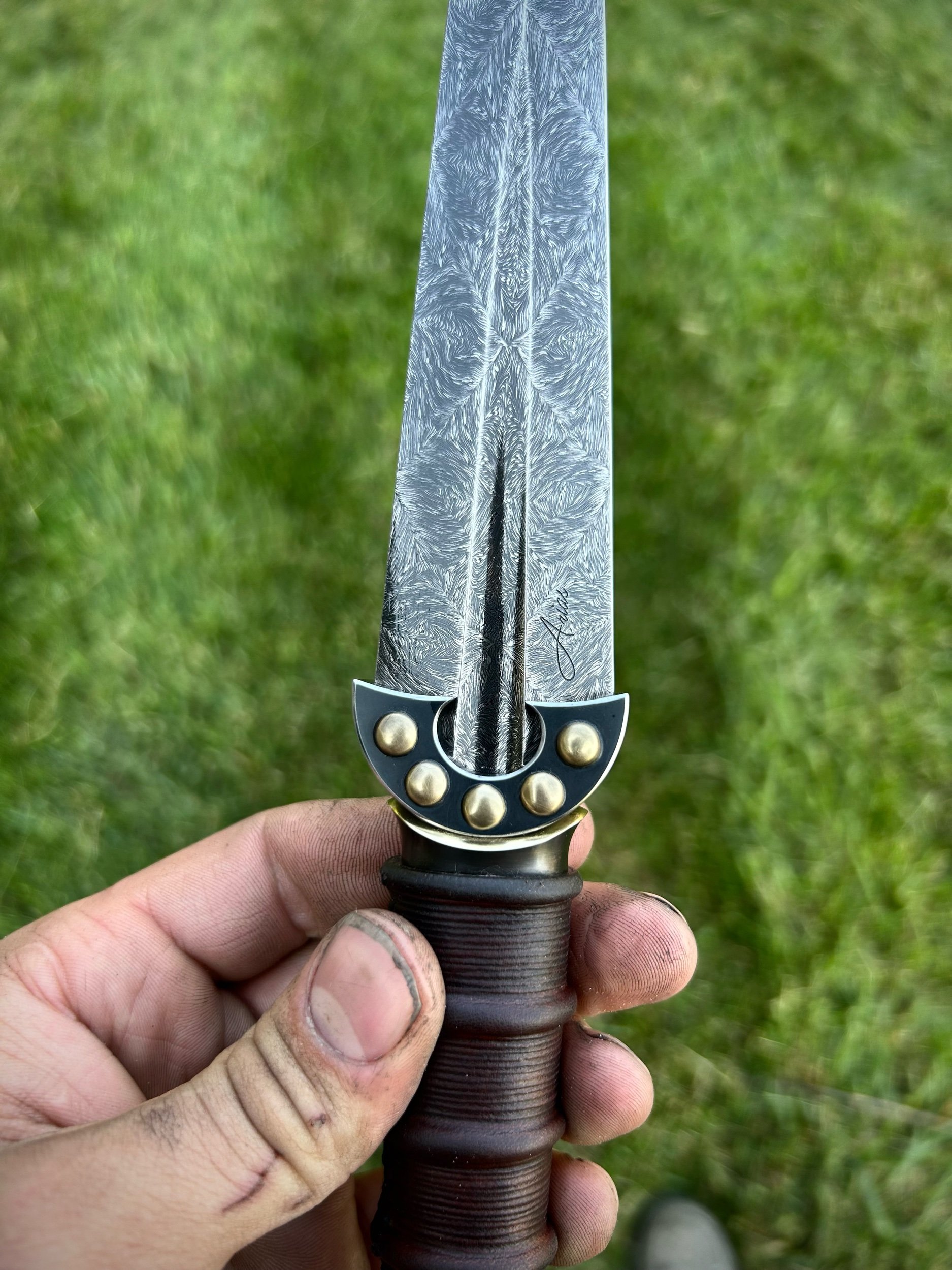 Image 7 of 14
Image 7 of 14

 Image 8 of 14
Image 8 of 14

 Image 9 of 14
Image 9 of 14

 Image 10 of 14
Image 10 of 14

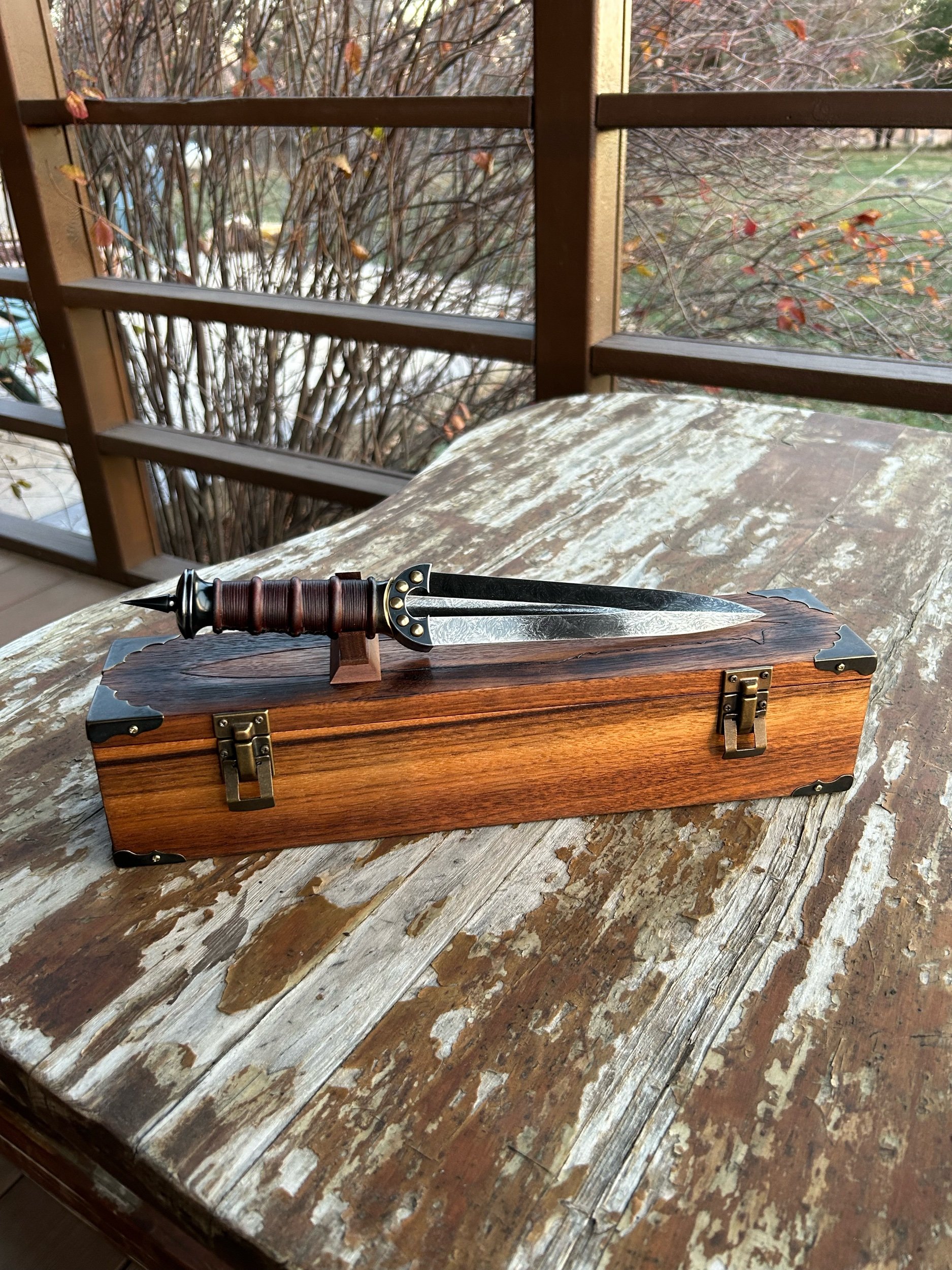 Image 11 of 14
Image 11 of 14

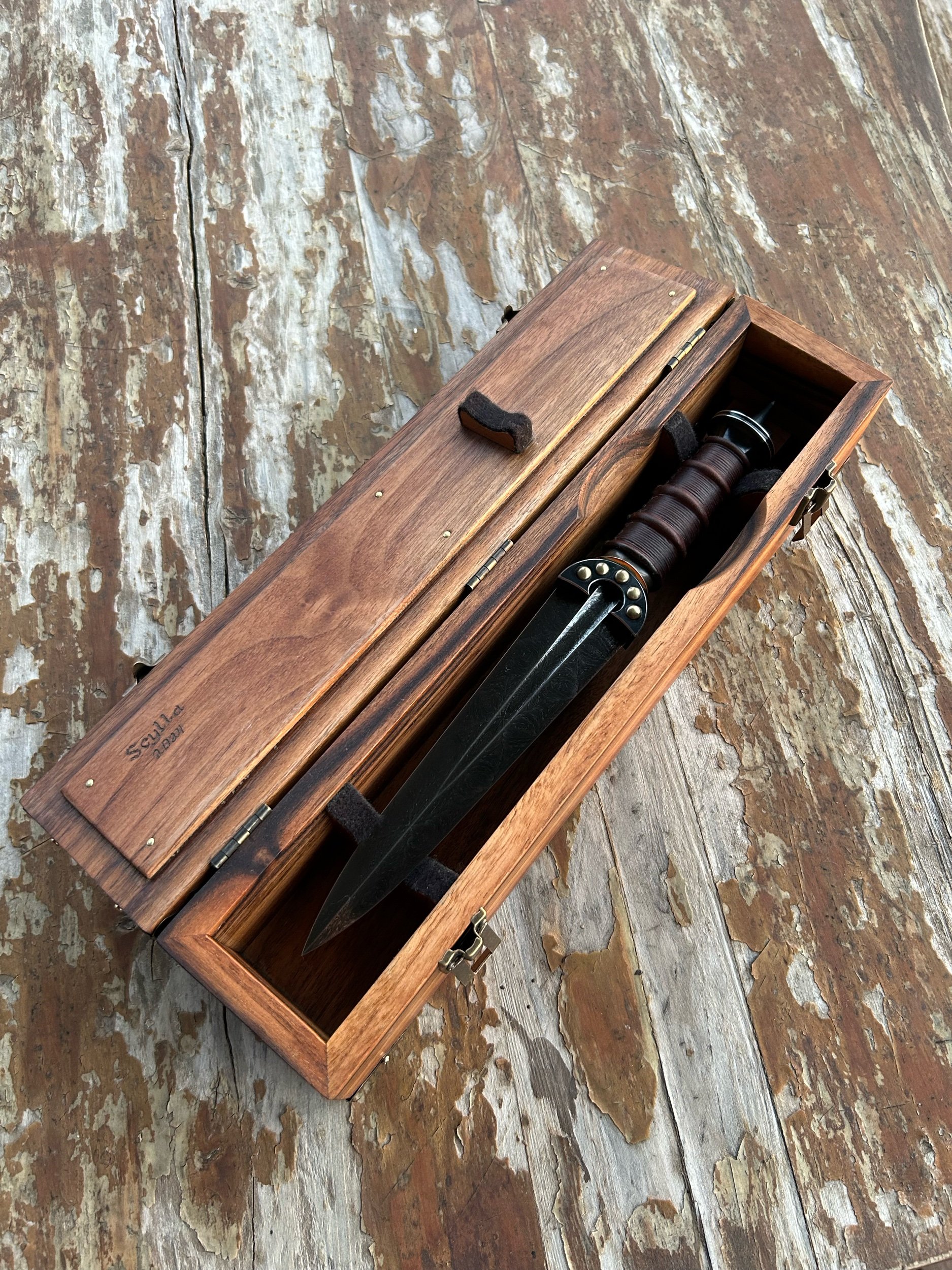 Image 12 of 14
Image 12 of 14

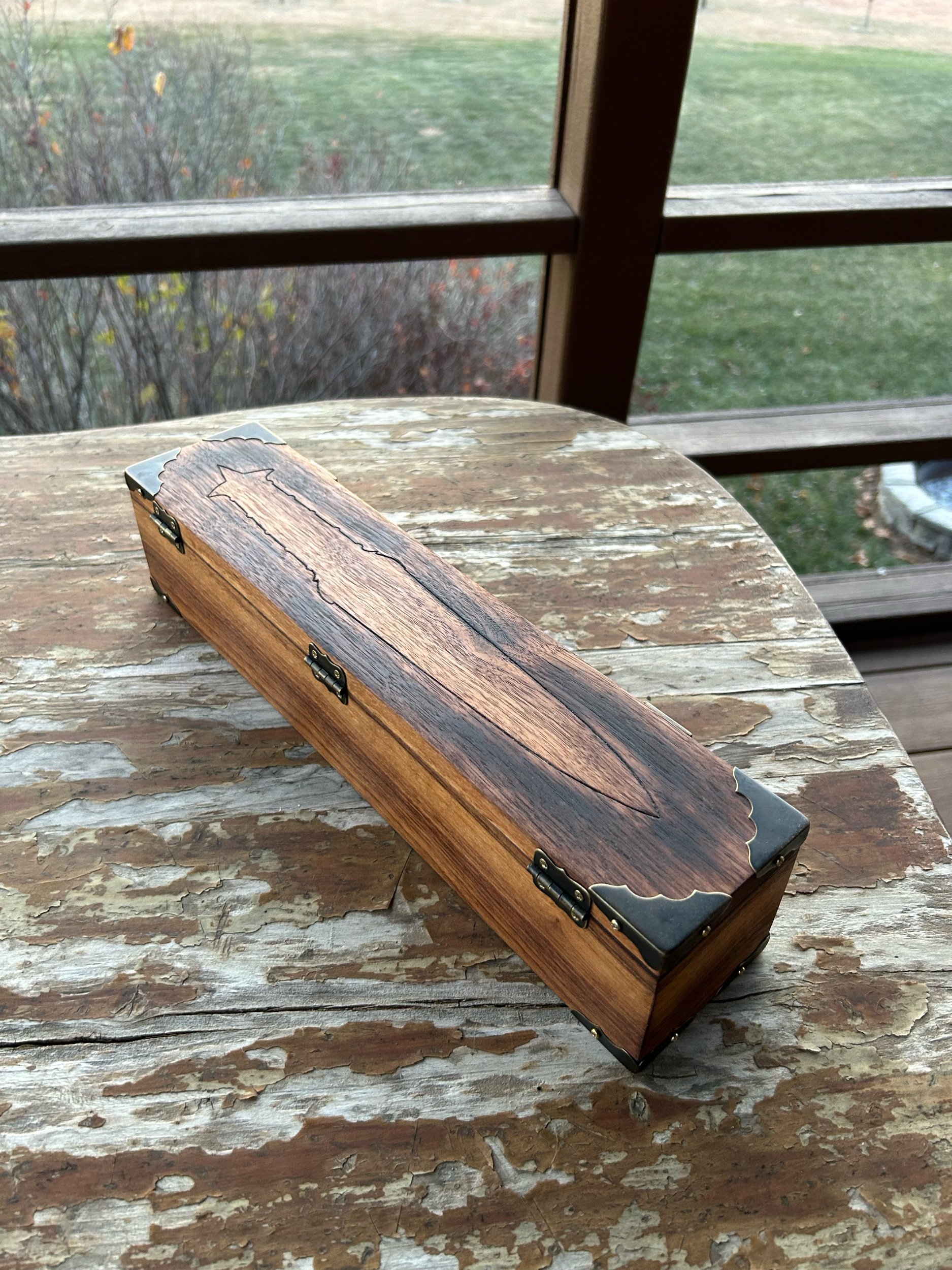 Image 13 of 14
Image 13 of 14

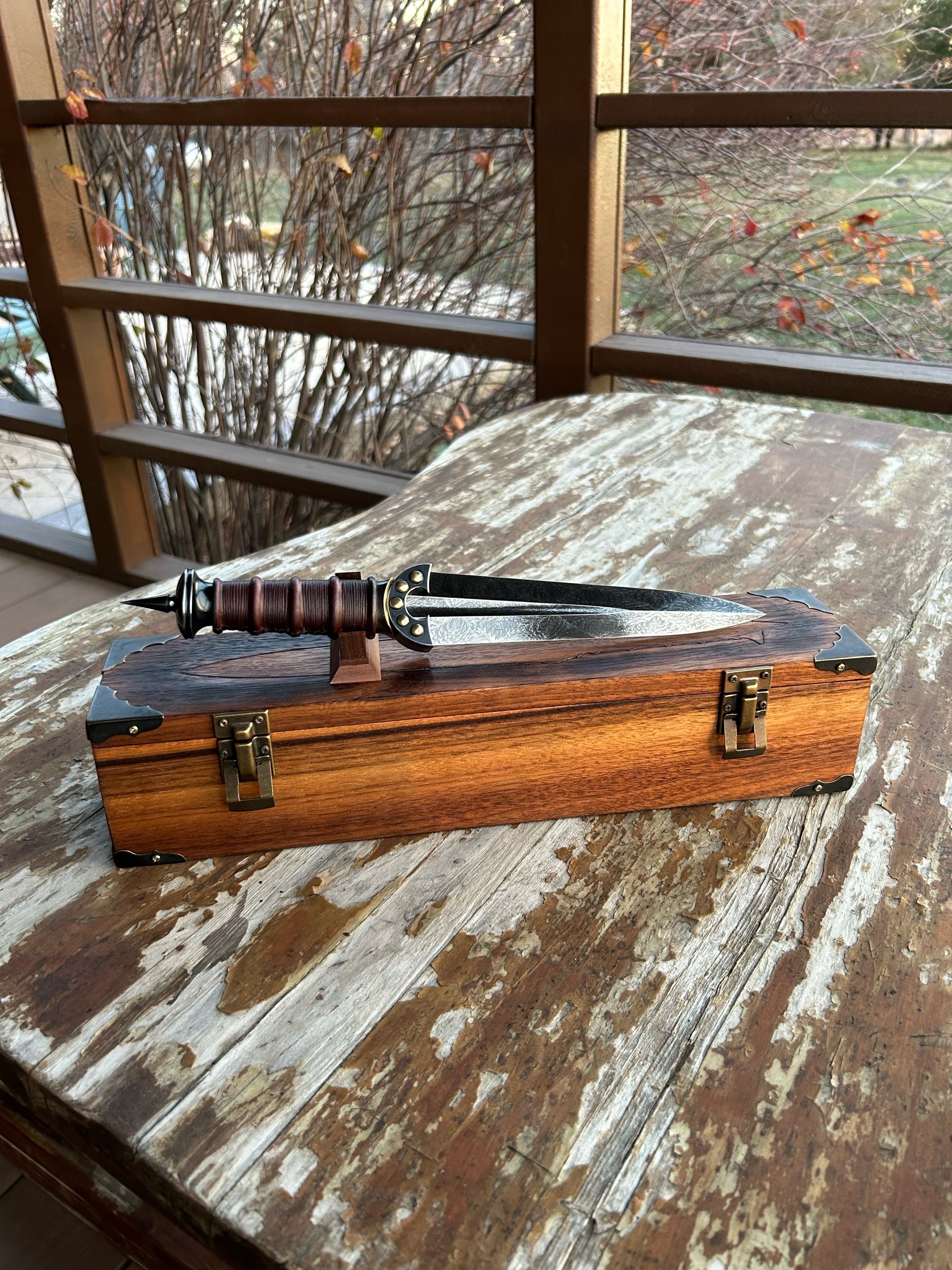 Image 14 of 14
Image 14 of 14















The Scylla Dagger
The Design:
Scylla is the most unique dagger I’ve ever created. My reason for making this piece was to pay homage to some of the earliest metallic weapons ever recovered, the Bronze-age Etruscan daggers. These daggers and the other Bronze Age weapons found in a similar time era have design characteristics that influenced centuries of different daggers and swords to come, and are some of my favorite historical blades ever. The name, “Scylla” was given to this piece as it is the name of an Ancient Greek mythological monster that was said to terrorize the seas close to where these daggers were found. The pattern strongly resembles turbulent waters.
A Bronze-Age dagger is not a blade you see recreated often, if ever, due to the odd construction which traditionally uses rivets to fasten the blade to the handle. Though I did install rivets to the traditional crescent guard, I made the dagger in a through-tang, take-down construction. This provides unmatched strength, maintains the appearance of the historical blades, and allows me to use multiple removable handle components and fittings.
The Pattern:
This is the most unique Damascus pattern I have ever made for several reasons. Firstly, it was made using a very difficult method of making feather Damascus which I have not seen completed before. Secondly, I forged this pattern into non-parallelogram shapes in order to restack, which takes extremely precise forging and immaculate forge welds. Finally, this pattern appears quite tight and busy from afar, but once you begin to examine it closer, you are able to see the matrix of subtle complexity come alive.
The Handle:
Much like the blade, the handle was designed after the Bronze-Age Etruscan daggers. Of course, though, I modernized it by using a threaded pommel nut and through-tang construction. This allowed me to bring elements of the future into the ancient design. The handle is a goatskin leather wrap with perfectly spaced risers for a secure grip. The guard, pommel, pommel nut, and spacer are all intricately sculpted and polished to provide tasteful facets and curves throughout the handle.
The Box:
This blade does not have a sheath, though one can be made on request. However, it does come with a custom-built walnut storage box. I built this box with antiqued brass finishings, latches, and a felt-lined interior that perfectly fits the knife and holds it in place with hidden magnets. When the box is closed, the inside of the lid has a felt-lined arm which securely holds the blade in place, making sure that it does not move while in the box.
Length: 6.75” blade, 12” overall
Blade: 1084/15N20 mosaic Damascus
Handle: Steel guard, brass spacer, brass rivets, goat leather wrapped walnut core handle
The Design:
Scylla is the most unique dagger I’ve ever created. My reason for making this piece was to pay homage to some of the earliest metallic weapons ever recovered, the Bronze-age Etruscan daggers. These daggers and the other Bronze Age weapons found in a similar time era have design characteristics that influenced centuries of different daggers and swords to come, and are some of my favorite historical blades ever. The name, “Scylla” was given to this piece as it is the name of an Ancient Greek mythological monster that was said to terrorize the seas close to where these daggers were found. The pattern strongly resembles turbulent waters.
A Bronze-Age dagger is not a blade you see recreated often, if ever, due to the odd construction which traditionally uses rivets to fasten the blade to the handle. Though I did install rivets to the traditional crescent guard, I made the dagger in a through-tang, take-down construction. This provides unmatched strength, maintains the appearance of the historical blades, and allows me to use multiple removable handle components and fittings.
The Pattern:
This is the most unique Damascus pattern I have ever made for several reasons. Firstly, it was made using a very difficult method of making feather Damascus which I have not seen completed before. Secondly, I forged this pattern into non-parallelogram shapes in order to restack, which takes extremely precise forging and immaculate forge welds. Finally, this pattern appears quite tight and busy from afar, but once you begin to examine it closer, you are able to see the matrix of subtle complexity come alive.
The Handle:
Much like the blade, the handle was designed after the Bronze-Age Etruscan daggers. Of course, though, I modernized it by using a threaded pommel nut and through-tang construction. This allowed me to bring elements of the future into the ancient design. The handle is a goatskin leather wrap with perfectly spaced risers for a secure grip. The guard, pommel, pommel nut, and spacer are all intricately sculpted and polished to provide tasteful facets and curves throughout the handle.
The Box:
This blade does not have a sheath, though one can be made on request. However, it does come with a custom-built walnut storage box. I built this box with antiqued brass finishings, latches, and a felt-lined interior that perfectly fits the knife and holds it in place with hidden magnets. When the box is closed, the inside of the lid has a felt-lined arm which securely holds the blade in place, making sure that it does not move while in the box.
Length: 6.75” blade, 12” overall
Blade: 1084/15N20 mosaic Damascus
Handle: Steel guard, brass spacer, brass rivets, goat leather wrapped walnut core handle
The Design:
Scylla is the most unique dagger I’ve ever created. My reason for making this piece was to pay homage to some of the earliest metallic weapons ever recovered, the Bronze-age Etruscan daggers. These daggers and the other Bronze Age weapons found in a similar time era have design characteristics that influenced centuries of different daggers and swords to come, and are some of my favorite historical blades ever. The name, “Scylla” was given to this piece as it is the name of an Ancient Greek mythological monster that was said to terrorize the seas close to where these daggers were found. The pattern strongly resembles turbulent waters.
A Bronze-Age dagger is not a blade you see recreated often, if ever, due to the odd construction which traditionally uses rivets to fasten the blade to the handle. Though I did install rivets to the traditional crescent guard, I made the dagger in a through-tang, take-down construction. This provides unmatched strength, maintains the appearance of the historical blades, and allows me to use multiple removable handle components and fittings.
The Pattern:
This is the most unique Damascus pattern I have ever made for several reasons. Firstly, it was made using a very difficult method of making feather Damascus which I have not seen completed before. Secondly, I forged this pattern into non-parallelogram shapes in order to restack, which takes extremely precise forging and immaculate forge welds. Finally, this pattern appears quite tight and busy from afar, but once you begin to examine it closer, you are able to see the matrix of subtle complexity come alive.
The Handle:
Much like the blade, the handle was designed after the Bronze-Age Etruscan daggers. Of course, though, I modernized it by using a threaded pommel nut and through-tang construction. This allowed me to bring elements of the future into the ancient design. The handle is a goatskin leather wrap with perfectly spaced risers for a secure grip. The guard, pommel, pommel nut, and spacer are all intricately sculpted and polished to provide tasteful facets and curves throughout the handle.
The Box:
This blade does not have a sheath, though one can be made on request. However, it does come with a custom-built walnut storage box. I built this box with antiqued brass finishings, latches, and a felt-lined interior that perfectly fits the knife and holds it in place with hidden magnets. When the box is closed, the inside of the lid has a felt-lined arm which securely holds the blade in place, making sure that it does not move while in the box.
Length: 6.75” blade, 12” overall
Blade: 1084/15N20 mosaic Damascus
Handle: Steel guard, brass spacer, brass rivets, goat leather wrapped walnut core handle
